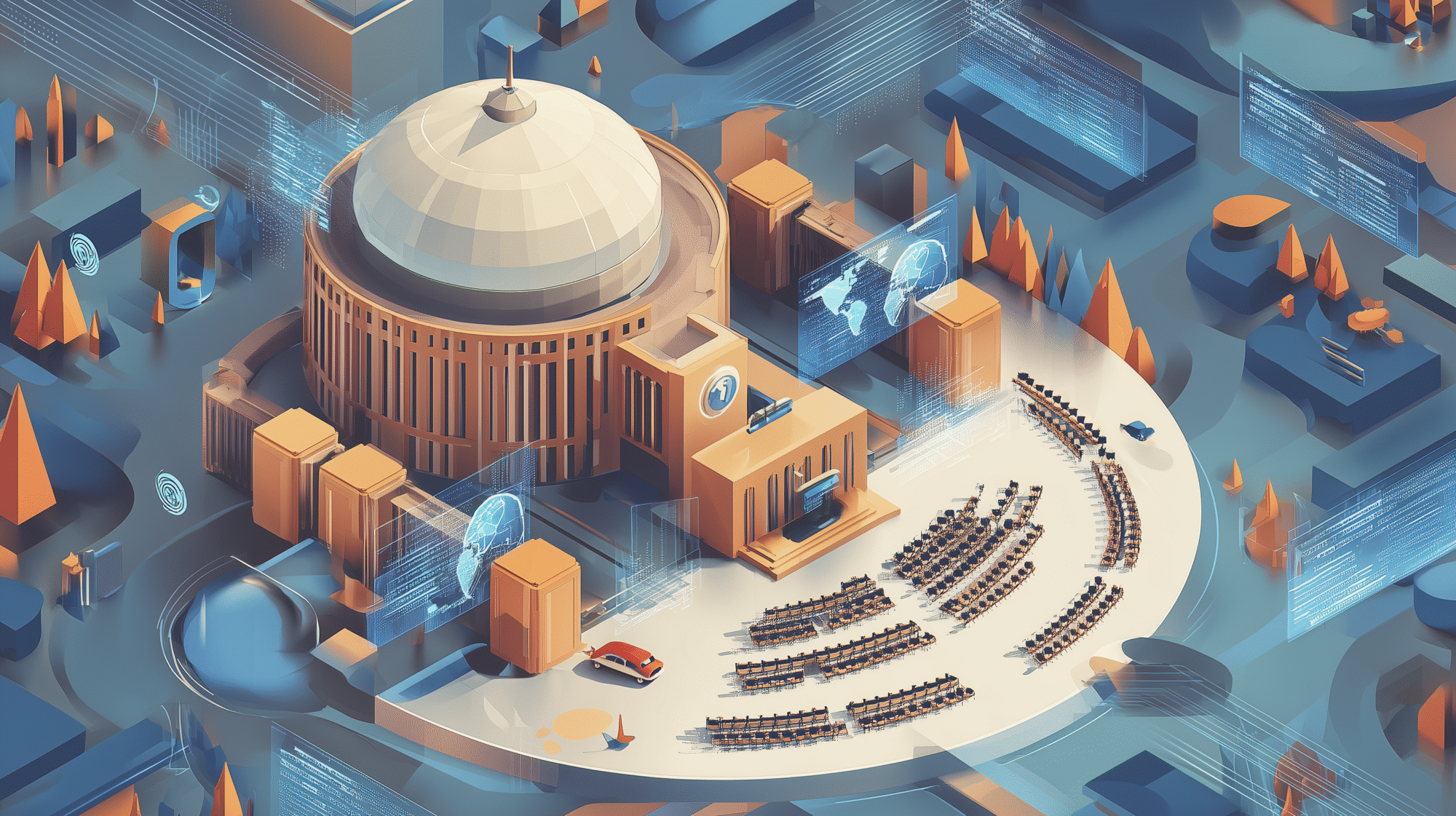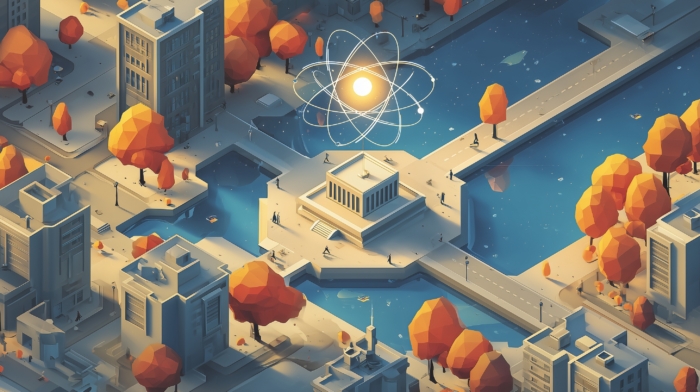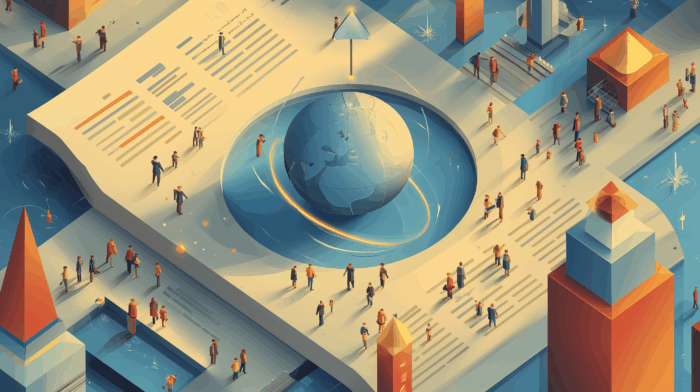
The UN and AI: Framing the Future
-
Commentary
-
AI Governance
-
Multilateralism
The UN is turning 80 this October. Amid wars, geopolitical tensions and a budget crisis, it is a sobering anniversary. Yet this milestone is also a chance to consider the future of the UN beyond today’s crises. In the coming years AI is poised to impact every aspect of social, economic and international order. How the UN manages to deal with the impacts of AI will shape the future of the UN itself.
In the last two years, the UN has made incremental but significant steps towards defining its role in AI. 190+ UN member states have agreed on a Global Digital Compact, resolutions on trustworthy AI and capacity building, as well as the creation of an Independent International Scientific Panel on AI and annual Global Dialogue on AI Governance. A proposal for a public-private fund to support global AI capacity building is also on the table.
Whether the UN can navigate the opportunities and the challenges of this transformative technology remains to be seen. Success will depend on identifying where the UN can bring added value and steering closely to deliver it. Three questions will need to be addressed: How does AI impact the UN’s core mission? What’s the right role for the UN in AI governance? Can the UN be agile enough to deliver on AI? Answers to them will shape the future of the organization.
1) What’s the impact of AI on the UN’s core mission?
The Trump administration wants the UN to focus on its “founding mission” of peace and security. Most member states perceive the mandate of the UN more broadly, based on its three pillars: peace and security, human rights, and development. Regardless of whether we look at just one or at all three pillars, AI is poised to have a significant impact on the UN’s core mission.
For example, the UN is negotiating norms on the use of autonomous weapons and today, the Security Council is meeting at ministerial level to consider “AI and international peace and security” under the South Korean presidency. Initiatives like the B-Tech project aim to encourage that a rights-based approach is embedded throughout the AI lifecycle. AI is already impacting the sustainable development goals and AI applications will be front and centre when developing a “Beyond 2030” successor framework.
If AI trends continue as projected, by 2030 we will have AI systems that have been trained with 1000x the compute of today’s most capable AI models. While there will arguably never be a specific date at which artificial general intelligence unambiguously “arrives”, the trendline clearly points towards AI systems that perform well on an increasingly wide range of cognitive tasks. Yet as a recent report highlighted, most of the UN’s attention is on the AI of today. While a specific AI future scenario like AI 2027 may not happen, the scale and speed of AI development means that the topic is likely to grow in prominence on the UN agenda.
Recognizing this, the UN Secretary General António Guterres made a deliberate choice to make AI a focus for the UN. As advanced AI will be increasingly critical for all pillars of the UN’s work, the next Secretary-General will have no choice. If the UN is to have a future, understanding, adapting to and governing AI should be a core focus of his or her agenda.
2) What’s the right role for the UN in AI governance?
Member states have different visions of the role of the UN in AI governance. The global mandate and universal membership of the UN are great assets for fulfilling some functions, but clearly not for all functions. The UN must carve out a role in AI governance that is distinct and that adds value. Three functions stand out:
a) Establishing scientific consensus: Given the range of opinions held by AI experts and the fast-changing nature of AI, a trusted, accessible overview of where the science is at and what future projections exist is very useful. A global AI assessment report is a global public good and it can help to inform both domestic and international AI governance. That’s the role of the Independent International Scientific Panel on AI.
b) Promoting responsible diffusion: In multilateral settings, leading AI developer countries compete for value alignment and market access among third parties. The US, China, and the EU all aim to promote the adoption of international AI standards that align with their industries and values.
As such the UN can also be a canvas for leading developers to offer positive AI visions for the future. An interesting historical analogy may for example be the International Conferences on the Peaceful Uses of Atomic Energy in Geneva, where leading producers highlighted to the rest of the world what “Atoms for Peace” could achieve. As highlighted by the US-led and China-led General Assembly resolutions on AI, and the Secretary General’s report on innovative financing options, the UN also offers a venue for promoting cooperation on AI capacity building.
c) Mitigating global risks: There is a shared interest among leading AI developer states to limit the proliferation of dangerous capabilities, such as the ability to produce bioweapons, to non-state actors and to avoid AI arms racing that could lead to a loss of control on both sides. The UN has a history of addressing such challenges that has been recognized by key powers, including the US and China. For example, this could include coordination on minimum safety and security standards to deny dangerous capabilities to threat actors. Or, this could include defining red lines that should not be crossed. In a similar vein, President Trump announced an international effort to enforce the Biological Weapons Convention at the UN General Assembly.
3) Can the UN be agile enough to deliver on AI?
Speed is not the main strength of the UN system. As the UN Tech Envoy, Amandeep Gill, has argued, “UN processes can be lengthy because consensus-building across a large number of players can take time, and technology moves fast. Therefore, we need to be more agile.” If the UN is to play a role in navigating advanced AI it must become faster at identifying emerging challenges and opportunities. The Secretary-General of the ITU, Doreen Bogdan-Martin, has called for more technology foresight. The Independent International Scientific Panel on AI can be a part of the solution.
Another important factor is reducing the lag between problem identification and the negotiation of solutions. This lag has often been measured in multiple decades in the UN. However, the Montreal Protocol is a good example highlighting that it is possible for the multilateral system to respond in a relatively fast and agile manner. The Antarctic ozone hole was first reported by British scientists in 1985. Formal diplomatic negotiations on a binding treaty began in December 1986. In September 1987, under the leadership of the Reagan administration, governments agreed to the Montreal Protocol on Substances that Deplete the Ozone Layer, saving millions of people from skin cancer.
If AGI accelerates the rate of societal, economic, and geopolitical change, the UN should be agile enough to respond. On a high-level this may suggest rediscovering “the spirit of Leesburg”, prioritizing outcomes over formal processes. It may also suggest that not every UN process has to be about everything. Adding a dozen worthy but separate policy objectives to UN processes creates hidden but real costs in terms of speed and complexity. The degree to which established and emerging technology can be useful in the quest for multilateral dynamism remains to be seen, but it’s also worth exploring.
A defining challenge for the UN
The last 80 years have been the most prosperous in human history. The UN has contributed its part from 70+ peacekeeping missions, to nuclear non-proliferation, to eradicating the scourge of smallpox, to coordinating action on global environmental challenges like the ozone hole. The UN’s contributions to ensuring that AI is governed responsibly are crucial to ensure that the organization lives up to its tremendous potential in the next 80. Happy birthday!



